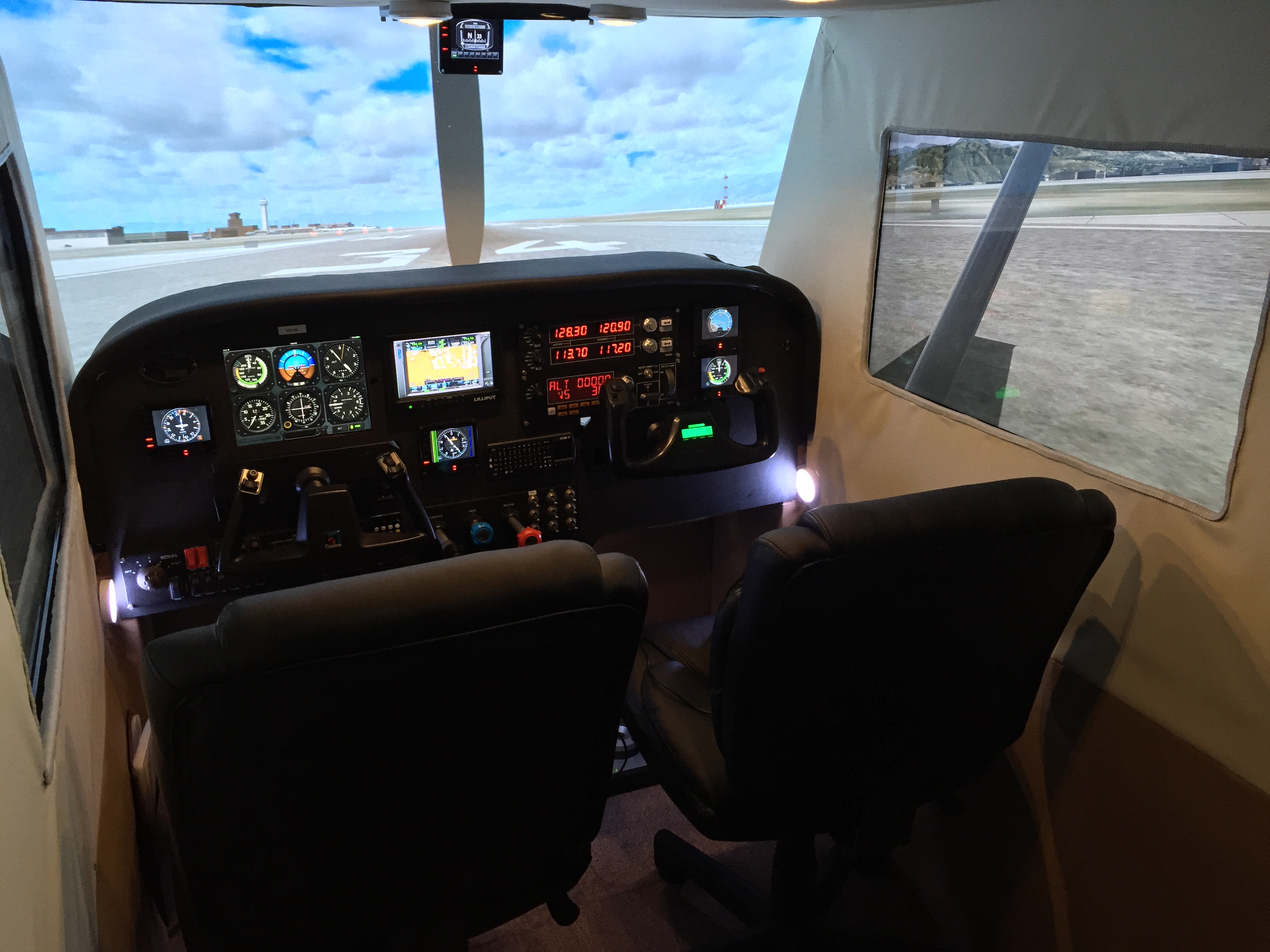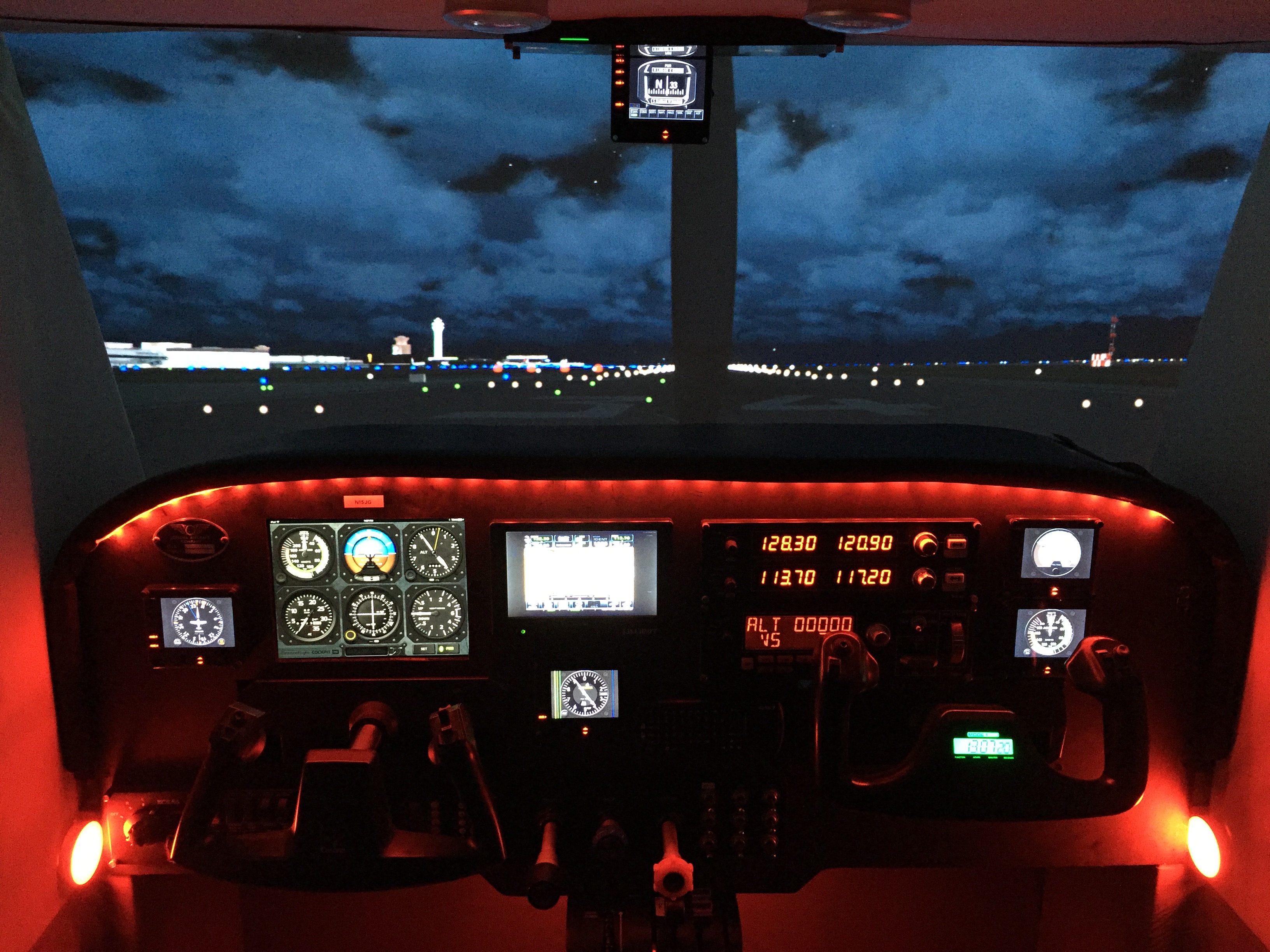Welcome to On The Glideslope. As a first post for the blog, I figured I better make an account of the whats and whys of how I got here.
First, in terms of me, I’m an anonymous guy who has a flight simulator in his basement (let’s call me “Fly Guy” for short). I know: exciting stuff. If you think it’s exciting for you, you should talk to my wife. I don’t have a private pilot’s license, and my flying (save the 150,000 or so miles I fly each year for work) is purely virtual. Nonetheless, I’ve sunk a bunch of time and money into having a flight simulator under my kitchen.
So how’d that happen?
Well, I’ve been into aviation as long as I can remember. One of my first words was “plane.” One of my vivid childhood memories is flying to Ohio to visit my Grandmother. Whenever we’d make the drive to visit my other Grandmother, the best part of the trip was always the stretch by the local Air Force base, where on a lucky day I could see F-16s flying patterns. One of the best Christmas gifts I received as a teen was time in a Piper Cub, a gift from my brother. In junior high I was one of the two geeks in the “Aviation Club,” run by a former B-17 pilot (and English teacher) who happened to have a WWII Link trainer stashed away in a boiler room at the school. My dream in high school? Go to the Air Force Academy, become a fighter jock, and serve as a test pilot.
You get the gist. Aviation has always been an interest, if not a passion.
And along the way, I fed the interest with flight simulators. My first time using a home computer simulator was SubLogic FlightSimulator 1 on the Apple II. There’s nothing like green screen wireframe for an immersive experience. But thankfully technology evolved. I used FlightSimulator (originally SubLogic and then Microsoft) on the Commodore 64, Amiga, and PC, and the on the Mac, X-Plane. And while I always loved it, the sim was never quite realistic enough for me to keep with it consistently.
I’ve toyed with the idea of getting my private pilot’s license along the way, and was quite close to making that decision when our first child was born a few years back. But my father, who was an Air Force doc and pilot in the 60s, gave me some advice: “With your schedule you’ll never fly enough to stay really current and safe. If you’re just going to bore holes in the sky, and you can’t stay current and safe, you shouldn’t fly.” I’ve made a practice of listening to my Dad over the years, so I tabled that idea.
So it was about a month ago that I was trolling YouTube and came across a bunch of great home cockpit flight simulation videos. One guy in particular – Flight Sim Liberty – really got my attention with the C182 simulator that he’d built in his home. At that point it sort of dawned on me that I could build the home simulator I’ve always wanted, and take my passion to the next level as a full-fledged hobby. Not only is it something I really like to do, but building a sim from scratch would engage all kinds of other things that appeal to me: technology, engineering, details, and aviation on top of it. In essence, there was a huge geek factor here, just waiting to be tapped. All in all, it seemed like a great hobby, especially for the winter when I can’t pursue my other passion, fly fishing.
So about two months ago I got to work planning. I figured I’d build a general aviation cockpit, roughly modeled on a Cessna 182, but with enough flexibility that I could fly multiple aircraft in the simulator if I chose. I planned the panel based on a life-sized PDF of a Cessna 172 panel but a few inches wider than in reality to accommodate what would be a 48-inch wide cabin. I used Google Sketchup to do the CAD work for a cockpit roughly of the 182’s size (though a bit taller at 56 inches). I trolled Ebay and won a big bundle of Saitek instrumentation equipment, and after that I was off to the races. After a few weeks of planning, a good buddy who flies Beechcraft for a living came to town, we went to Home Depot, and we were building a flight simulator.

Five weekends later and the simulator was for the most part done and running (save the occasional and mysterious crashes to desktop that come with working in a Windows environment). I’ve learned a lot about simulator technology, and more about graphic processing units and the voltage loading of USB hubs than I care to admit. I’ve even learned about how much leatherette someone will cut for you at Joann’s Fabrics. One of the critical things I’ve learned is that a basement flight simulator, probably like a boat or a real aircraft, is an ongoing process. Fix one thing, and another thing breaks. Tweak here, and something goes out of alignment there. But that’s because it’s a system, not a static thing, and working in a system is always a labor of love. But love it I do. The sim is great, it looks fantastic and performs astonishingly well, and my buddy says it’s every bit as good as what they train in for their FAA certifications. I love flying in it, if virtually, plain and simple. More than that, though, I’ve loved working on it. Something like this is very much a Zen activity: you have to love the process, because in some ways the destination never comes.

Oh, why the name, “On The Glideslope?” First, it sounds cool. But second, for me that’s the best part of a VFR or IFR approach: when you have the aircraft dialed in, the trim is just right, the rate of decent is just right, and the VOR indicator is pegged right in the center. Everything is just so. In virtual flying, as in life, that’s a beautiful thing. Hence the name. I hope you like the site, and thanks for coming by.